Robert E. Lee, a prominent figure during the American Civil War, played a crucial role as a Confederate general and left a lasting impact on the shaping of Southern history. Serving as the commanding general of the Army of Northern Virginia, Lee led the Confederate forces in several notable battles, including the Battle of Gettysburg. Known for his strategic brilliance and leadership skills, Lee became a symbol of the Confederate cause and commanded the respect and admiration of his troops. Despite ultimately surrendering to the Union forces, Lee’s military prowess and unwavering commitment to the Southern cause have cemented his place in history as a key figure in the Confederate legacy and the shaping of the Southern narrative.
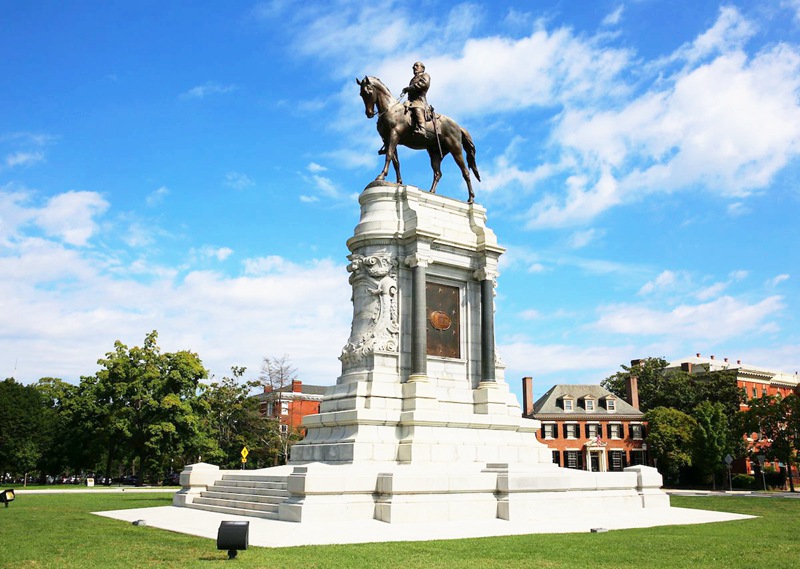
Description of the Physical Features of the Statue:
The Robert E. Lee statue is a striking representation of the Confederate general, showcasing various physical features and unique details. Made from bronze, the statue exhibits a robust and lifelike presence. Standing tall, it typically measures around 15 to 20 feet in height, emphasizing Lee’s commanding stature and authority. The statue captures Lee in a dignified and resolute pose, often depicted wearing a military uniform with intricate detailing, such as buttons, epaulets, and a hat.
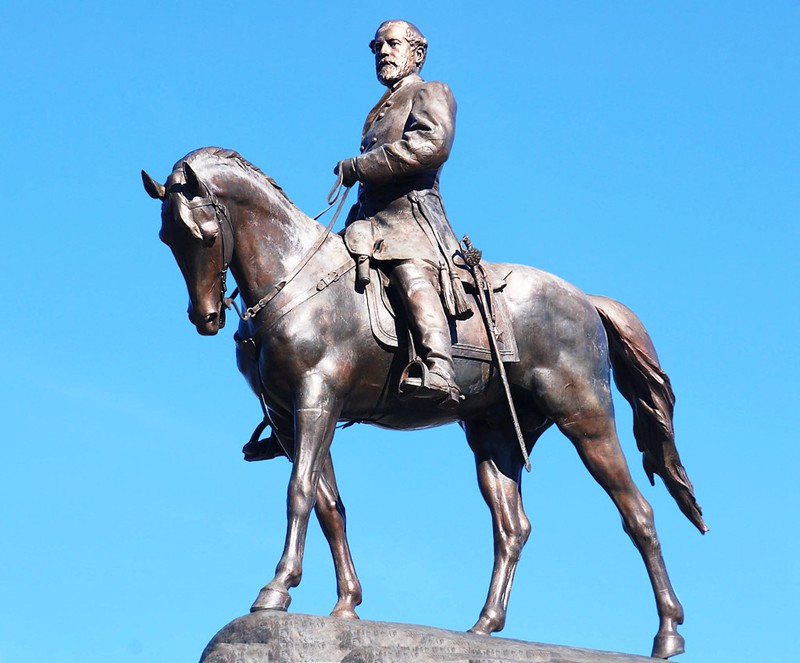
The facial features are meticulously sculpted, showcasing Lee’s distinguished appearance and strong character. The statue may also include symbolic elements, such as a sword or binoculars, further highlighting Lee’s military leadership. Overall, the Robert E. Lee statue embodies the physical likeness of the Confederate general, paying homage to his historical significance and the era he represents.
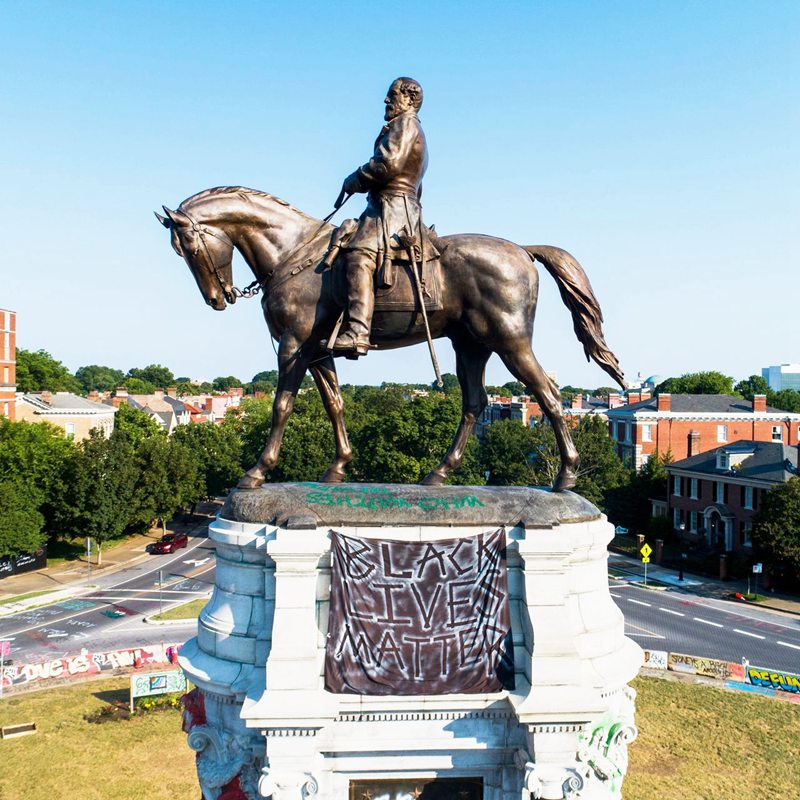
Furthermore, the Robert E. Lee statue features a prominently depicted horse that adds to the overall impact of the sculpture. The horse is crafted with careful attention to detail, capturing the grace and strength of the animal. The statue portrays the horse in a dynamic pose, often with its front legs raised or in mid-stride, conveying a sense of motion and energy. The horse’s muscular build and powerful stance symbolize the spirit and resilience associated with Robert E. Lee and the Confederate cause. The statue’s artist skillfully brings out the intricate anatomical features of the horse, from the flowing mane and tail to the expressive eyes and ears. The horse’s harness and saddle may also be intricately designed, reflecting the era’s military regalia and emphasizing the statue’s historical context. The inclusion of the horse in the Robert E. Lee statue not only enhances the visual composition but also represents the importance of cavalry and equestrianism in Lee’s military career.
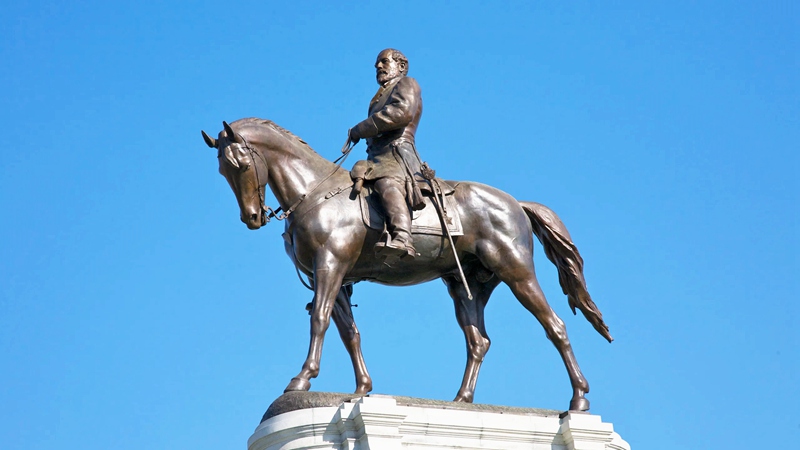
when was Robert E Lee’s Statue Erected?
The Robert E. Lee statue was erected on May 29, 1890, by the Monumental Bronze Company, a prominent bronze casting company at the time. The intention behind its erection remained the same as previously mentioned – to commemorate and honor Robert E. Lee’s role as a Confederate general and to symbolize the pride and heritage of the Southern states. The statue served as a tribute to Lee’s leadership and military achievements, while also preserving the memory of the Confederacy.
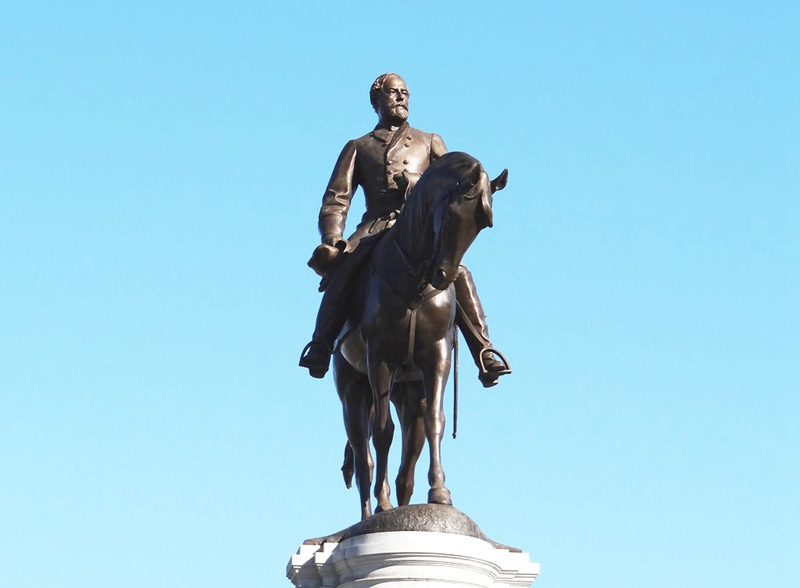
Where is Robert E. Lee’s Statue Now?
The specific location of the Robert E. Lee statue can vary depending on the context and community. These statues are often found in public spaces, such as parks, historical sites, or prominent locations within a city. They are placed strategically to commemorate and honor Robert E. Lee’s historical significance, particularly in relation to the American Civil War and the Confederacy.
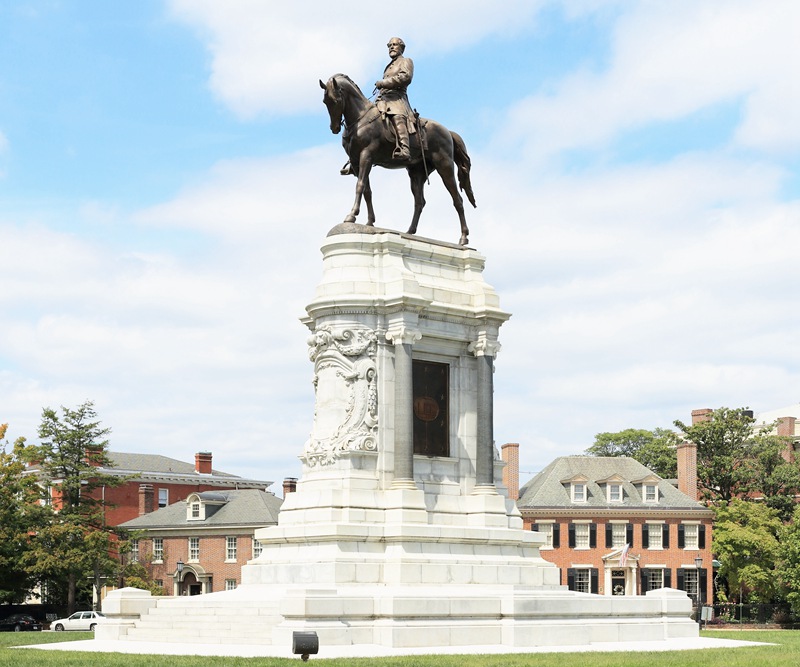
The statue can be seen as a symbol of Southern heritage and pride, representing a specific period in history that some individuals may identify with and feel connected to. It serves as a reminder of the local area’s involvement in the Civil War and its ties to the Confederacy.
However, it is important to note that the presence of these statues has also sparked debates and controversies due to their associations with slavery and racial inequality. Some argue that these statues glorify a painful chapter in American history and perpetuate systemic racism. As a result, there have been ongoing discussions and actions taken to either remove or relocate such statues, reflecting the evolving understanding and sensitivity towards these symbols within the community.
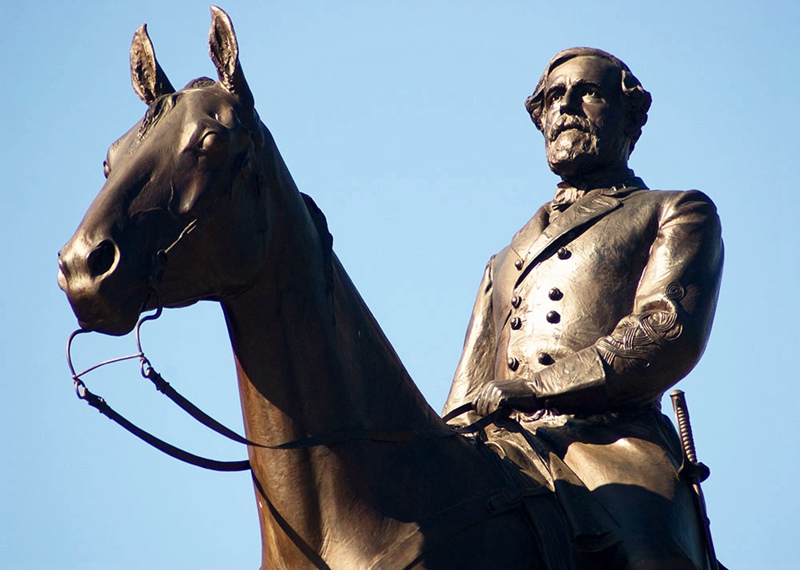
Why is the Robert E. Lee Statue So Controversial?
The Robert E. Lee statue, like many other Confederate statues, has been surrounded by controversy. There are differing views on whether the statue should be protected as a part of history or removed due to its association with the Confederacy and slavery.
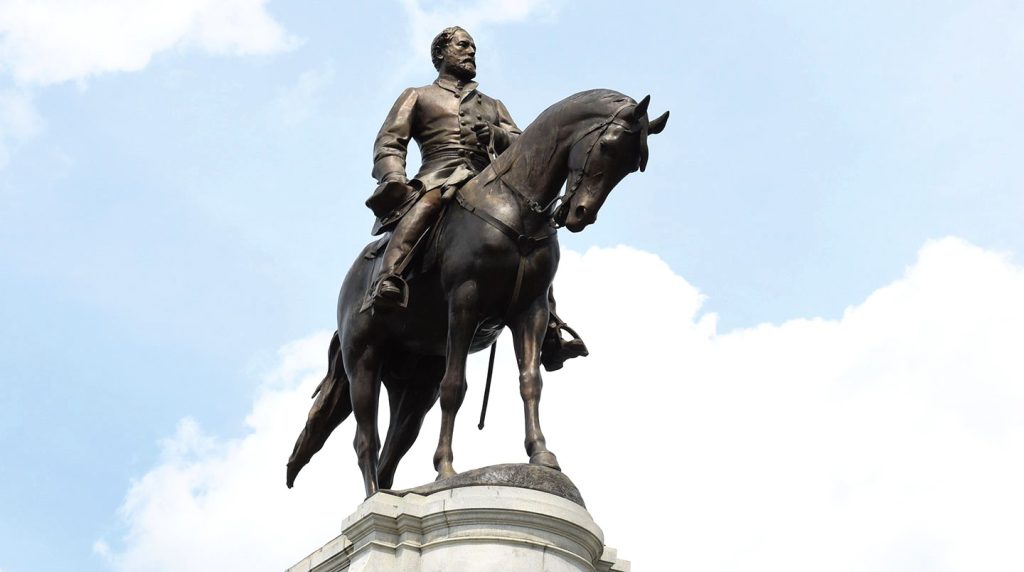
Supporters of preserving the statue argue that it is an important historical artifact that represents a significant period in American history. They believe that removing or relocating the statue erases an important aspect of the past and diminishes the opportunity for education and reflection. Supporters may argue that the statue serves as a reminder of the complexities of history and can be used as a tool for dialogue and understanding.
On the other hand, opponents of the statue’s presence argue that it symbolizes and glorifies a painful chapter of American history that includes slavery and racial oppression. They argue that these statues serve as a constant reminder of a system that dehumanized and marginalized a significant portion of the population. Opponents may view the statute as a perpetuation of systemic racism and an obstacle to progress toward a more inclusive and equitable society.
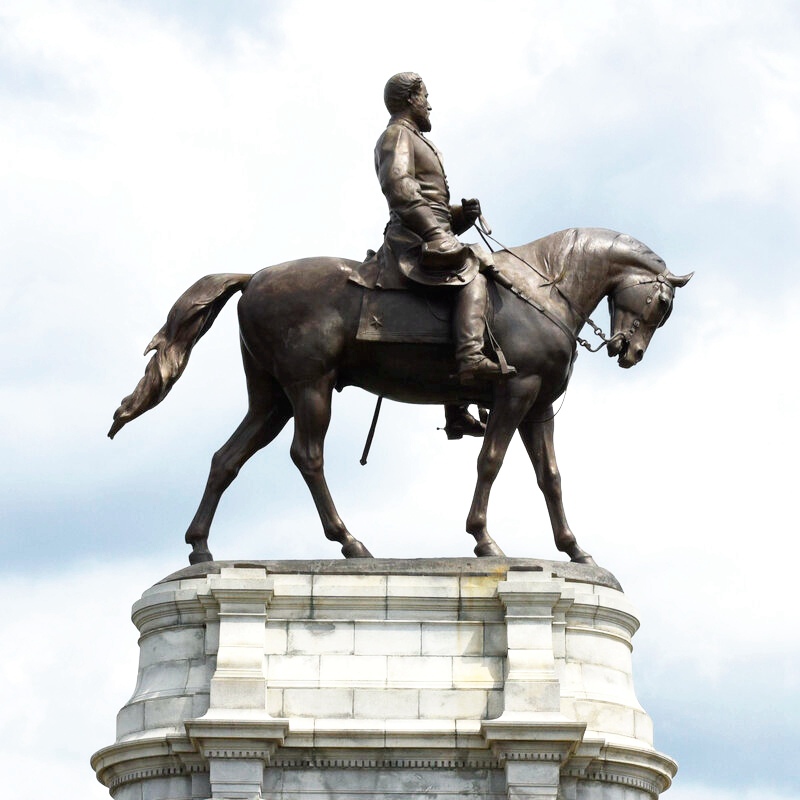
What is the Story Behind the Robert E Lee Statue?
The debate surrounding the Robert E. Lee statue reflects broader discussions about the role of Confederate symbols in public spaces and their impact on marginalized communities. It raises questions about how history should be remembered and commemorated, and whether certain symbols should be given prominence in public spaces. These conversations are part of ongoing efforts to address systemic racism and reckon with the legacies of slavery and discrimination in the United States.
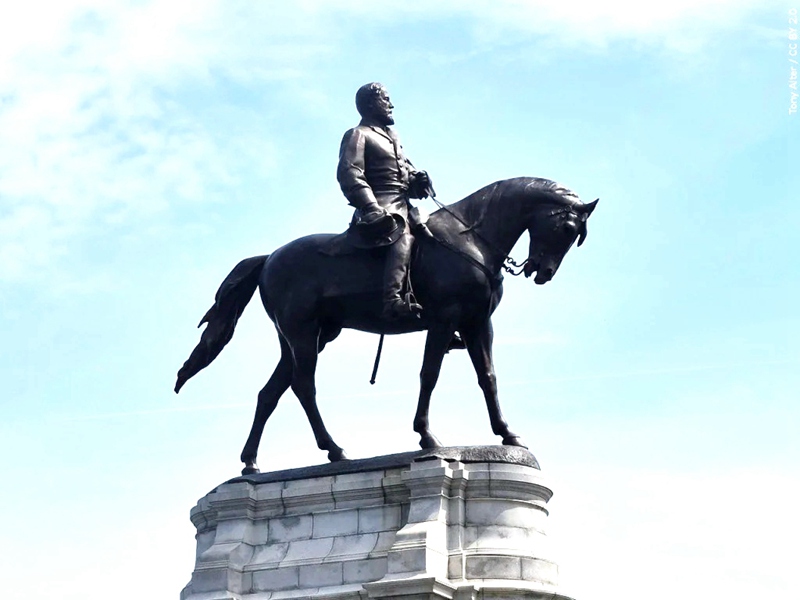
The period when the Robert E. Lee statue was erected was marked by the rise of Confederate memorials and monuments. This era, commonly referred to as the Lost Cause movement, emerged in the late 19th and early 20th centuries. During this time, there was a resurgence of interest in commemorating the Confederate States of America and its leaders, including Robert E. Lee.
The construction of Confederate monuments and memorials was driven by a desire to honor and memorialize the Confederate cause, which was seen by many in the South as a symbol of regional pride and heritage. The statues were often erected in public spaces such as parks, town squares, and courthouses, serving as reminders of the Confederate past and its ideals.

At the time, the prevailing social attitude in the South towards the Confederacy was largely influenced by the Lost Cause narrative. This narrative portrayed the Confederacy as a noble and honorable struggle for states’ rights and Southern traditions, downplaying or ignoring the role of slavery as a central cause of the Civil War. The erection of Confederate monuments was seen as a way to perpetuate this romanticized view of the Confederacy and to reinforce a sense of Southern identity.
It is important to note that societal attitudes and perceptions have evolved significantly since the time these statues were erected. Today, there is a more nuanced understanding of the historical context and the legacy of slavery, and many view these statues through a lens of racial injustice and oppression. This shift in perspective has led to debates and discussions about the appropriateness and significance of Confederate symbols in public spaces.
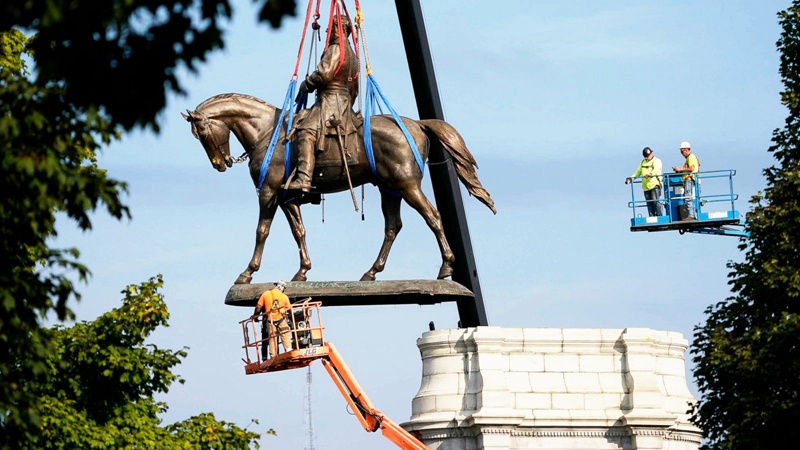
What is Important Information about Robert E. Lee?
For many, Confederate statues like the Robert E. Lee statue have become symbols of a painful and divisive history, particularly due to their association with the defense of slavery and the perpetuation of systemic racism. These statues can evoke deep emotions and act as reminders of a legacy that marginalized and oppressed African Americans. As a result, they have become focal points in the larger conversation about racial justice and equality.
The presence of Confederate statues in public spaces has sparked debates about whose history and narratives are being celebrated and memorialized. Critics argue that these statues uphold a revisionist view of the past, perpetuating harmful stereotypes and maintaining systems of white supremacy. Advocates for their removal argue that these statues do not align with the values of a diverse and inclusive society, and they advocate for their relocation to museums or other appropriate spaces.
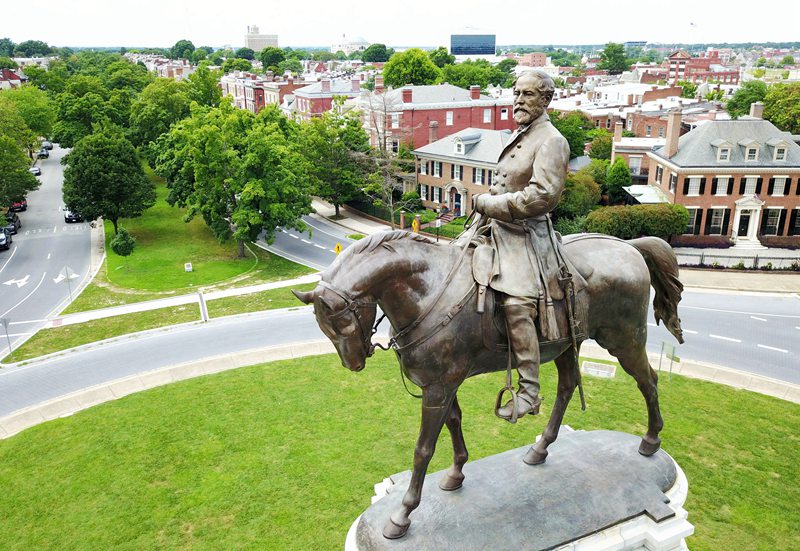
In recent years, protests, activism, and public discourse have called for a reevaluation of these statues and their place in public spaces. Some statues have been removed, while others remain the subject of ongoing discussions and legal battles. These debates reflect a growing recognition of the need to confront and address historical injustices and to create spaces that foster inclusivity, equality, and a more comprehensive understanding of history.
The impact of the Robert E. Lee statue and similar Confederate symbols on contemporary society goes beyond their physical presence. They serve as catalysts for critical conversations and a reexamination of societal values, challenging communities to grapple with difficult questions about race, power, memory, and representation. Their influence extends to shaping the collective memory and understanding of history, and their ultimate fate has the potential to shape a more equitable and inclusive future.
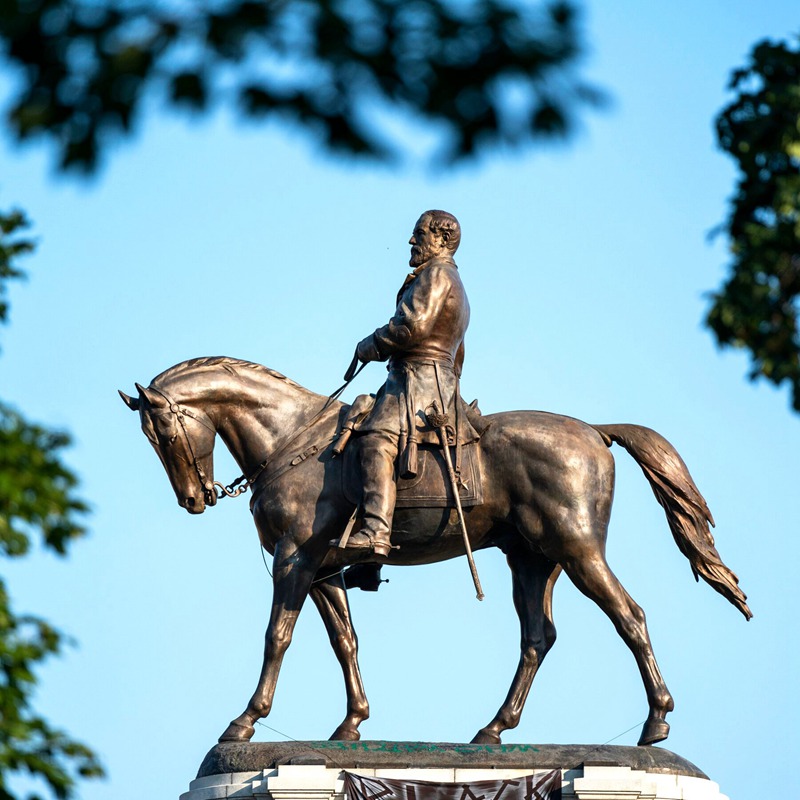
Why was the Statue of Robert E Lee Removed?
The statue of Robert E. Lee was removed due to a variety of reasons, including ongoing debates about its historical significance, racial implications, and concerns regarding public safety. Critics argue that the statue symbolized the Confederate era and the institution of slavery, representing a painful and divisive past. They viewed the statue as a glorification of a figure associated with white supremacy and oppression.
In recent years, there has been increased scrutiny of Confederate monuments and symbols, leading to widespread discussions and protests calling for their removal. Many communities and local governments have responded to these demands by deciding to remove Confederate statues, including the statue of Robert E. Lee, as a step towards addressing historical injustices and fostering a more inclusive and equitable society.
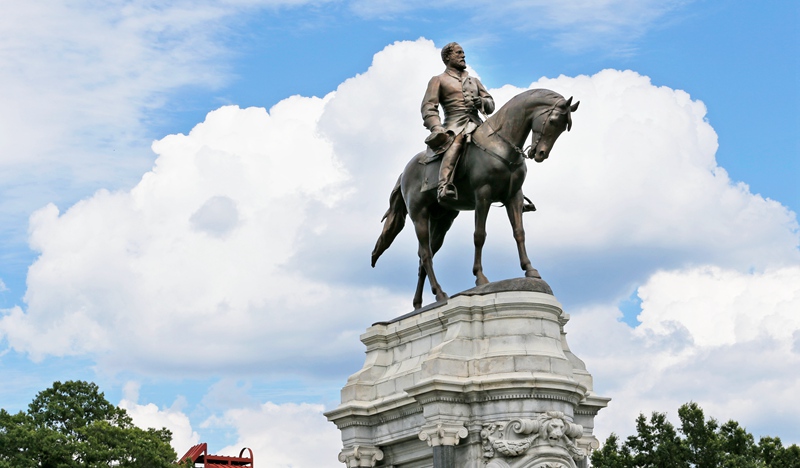
Furthermore, the decision to remove the statue was often influenced by safety considerations. In some cases, the presence of the statue became a focal point for protests and demonstrations, leading to potential clashes and public disturbances. Local authorities, concerned about public safety, chose to remove the statue to mitigate tensions and avoid potential conflicts.
It’s important to note that the decision to remove the statue of Robert E. Lee or any other Confederate monument can vary depending on the specific location and the perspectives of the community and governing bodies involved.
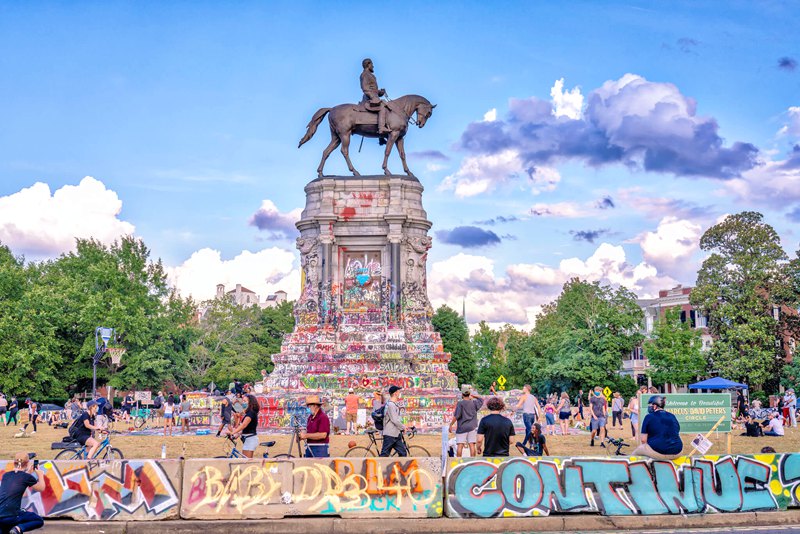
It is important to approach these discussions with openness, respect for differing viewpoints, and a commitment to understanding the complexities of history. Ultimately, the decisions made regarding the statue of Robert E. Lee and other Confederate monuments should reflect a collective effort to create a more just and inclusive society that acknowledges and addresses the legacy of slavery and systemic racism.